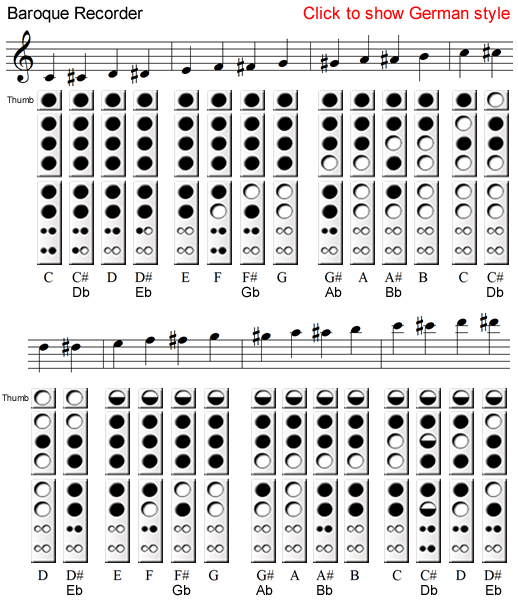
On Baroque recorders, the 4th hole from the bottom is smaller than the 3rd hole from the bottom. On German, it's reversed.
If you have an Alto recorder, the fingering pattern is the same. Only the note names change.
Use the pads of your fingers and keep them flat over the holes to get the best seal. Your elbows should be near your body, but not touching so that your wrists are comfortable and not bent much. This makes the flat fingers feel natural.
Avoid the tips of your fingers, because they aren't wide enough. It's okay for your fingers to hang off the edge of the recorder some, and you can experiment. The first knuckle over the hole is too far.
When first learning, it helps to play notes adding only one finger at a time, starting with the thumb and first finger on the left hand. Practice adding one finger at a time so you can get used to covering the holes. When notes squeak, it can help to do this exercise.
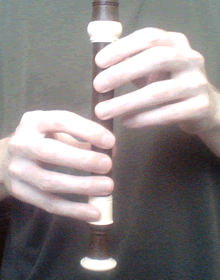
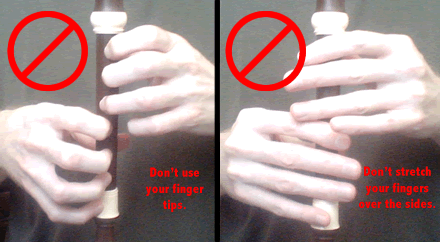
Don't get discouraged! It will take a little bit of time, but soon your fingers will develop the feel, and it gets easy.
When we play notes on recorder we think about air pressure and how our tongue lets us control it.
Think of your tongue being the valve that lets air start to flow or stops it again. We keep the air pressure always "turned on." But our tongue regulates when air is allowed to flow. We stop the air from flowing by touching our tongue to the roof of our mouth, just behind our upper front teeth.
Try this first without your recorder. Touch your tongue to the roof of your mouth behind your teeth and try to breathe out. But make sure your tongue doesn't let the air out.
Now release the air for a short time. When you release the air, it's like saying "Tu" or "Du." Your tongue breaks contact with the roof of your mouth, and the air can flow.
When you touch the tongue back to the roof of your mouth again, it stops the air from flowing, even though the air pressure continues.
Now try this on your recorder. The amount of air pressure you need is not much. It's like a whisper. Blowing too hard will make the recorder go too high.
"Tu" and "Du" create different sounds. The "T" sound, with the tip of our tongue touching the roof of the mouth, sounds brighter than the "D" sound, which flattens the tongue more. We use both when playing recorder to change the sound we want.
Often we don't want space between our notes. We want to keep things smooth. To do this, we combine the end of one note with the start of the next. So our tongue only briefly touches the roof of our mouth between notes, stopping the air for as short a time as possible.
To play upper notes on recorder, we do something we call "half thumb," indicating we open up part of the thumb hole, but not all. The amount we open up is actually much less than half. We only leave a tiny gap for the air. There are two common techniques for this, with Technique 1 usually being more reliable for the highest notes:
Thumb Technique 1: "Pinching" - For the "half thumb" notes, put your thumbnail against the upper edge of the thumb hole to create a tiny gap:
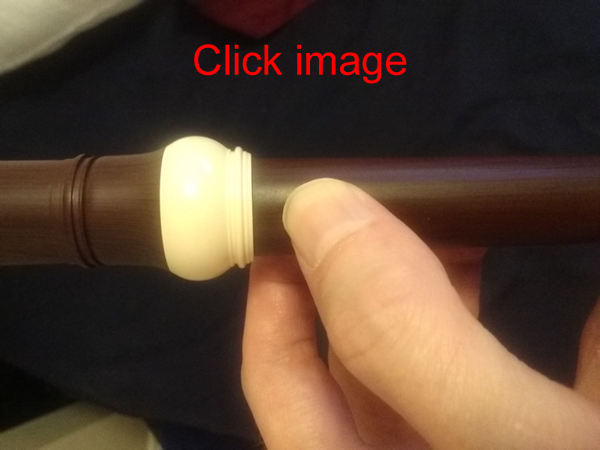
Thumb Technique 2: "Rolling" - Rock your thumb backwards slightly to create a tiny gap:
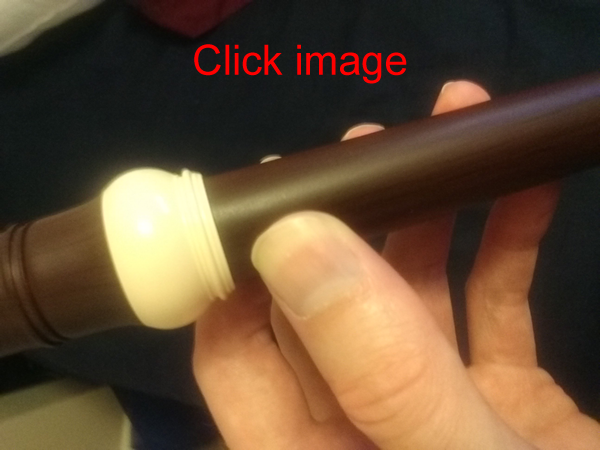
Practice your thumb technique by moving back and forth between low G and high G. Only your thumb changes.
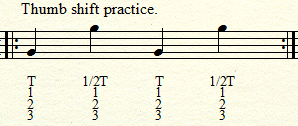
We're starting the first online recorder ensemble! We've built a brand new platform for online ensembles that's super fun, and it's a great way to develop your skills and make friends. Let us know you're interested below and we'll contact you soon.
Why learn in an online ensemble?
- No pressure. You practice and play your parts on your computer and only share them when you're ready.
- Music accommodates different skill levels!
- Practice the music on your own with the app between online sessions. It's a powerful learning tool!
- The ensemble sounds great thanks to auto balancing, reverb and turn-taking to keep the mix clean. Playing online offers a new kind of live experience with its own unique advantages.
- Join for free! If you stay with us, we'll invite you to support us on Patreon. But we want this to be available for everyone.